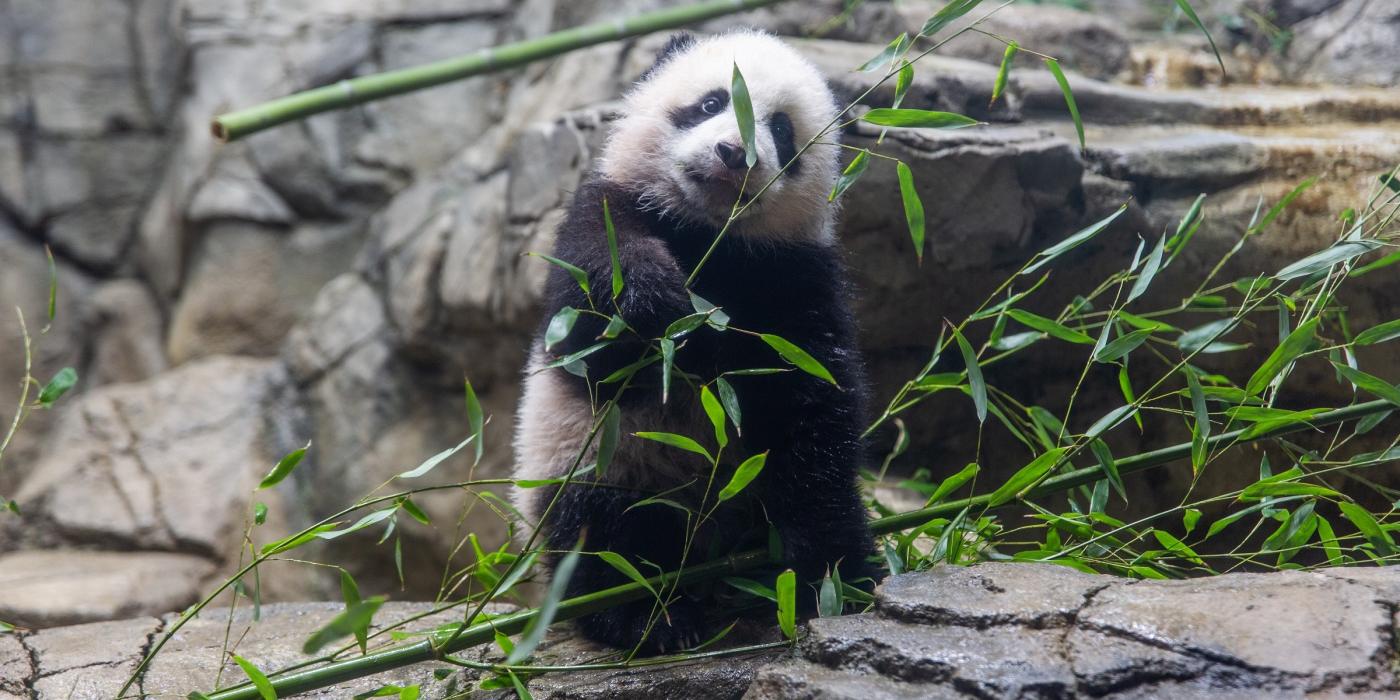The Science Behind Animal Snacks
How do you create a menu that is pleasing to the palates of giant pandas, flamingos and fishing cats? With more than 2,100 mouths to feed among 400 species, the Department of Nutrition Science whips up science-based bites for the Zoo’s carnivores, herbivores and everyone in between. Learn what goes into this massive meal prep from animal keeper Jen Rhodes as she dishes on a day in the life of a Commissary keeper!
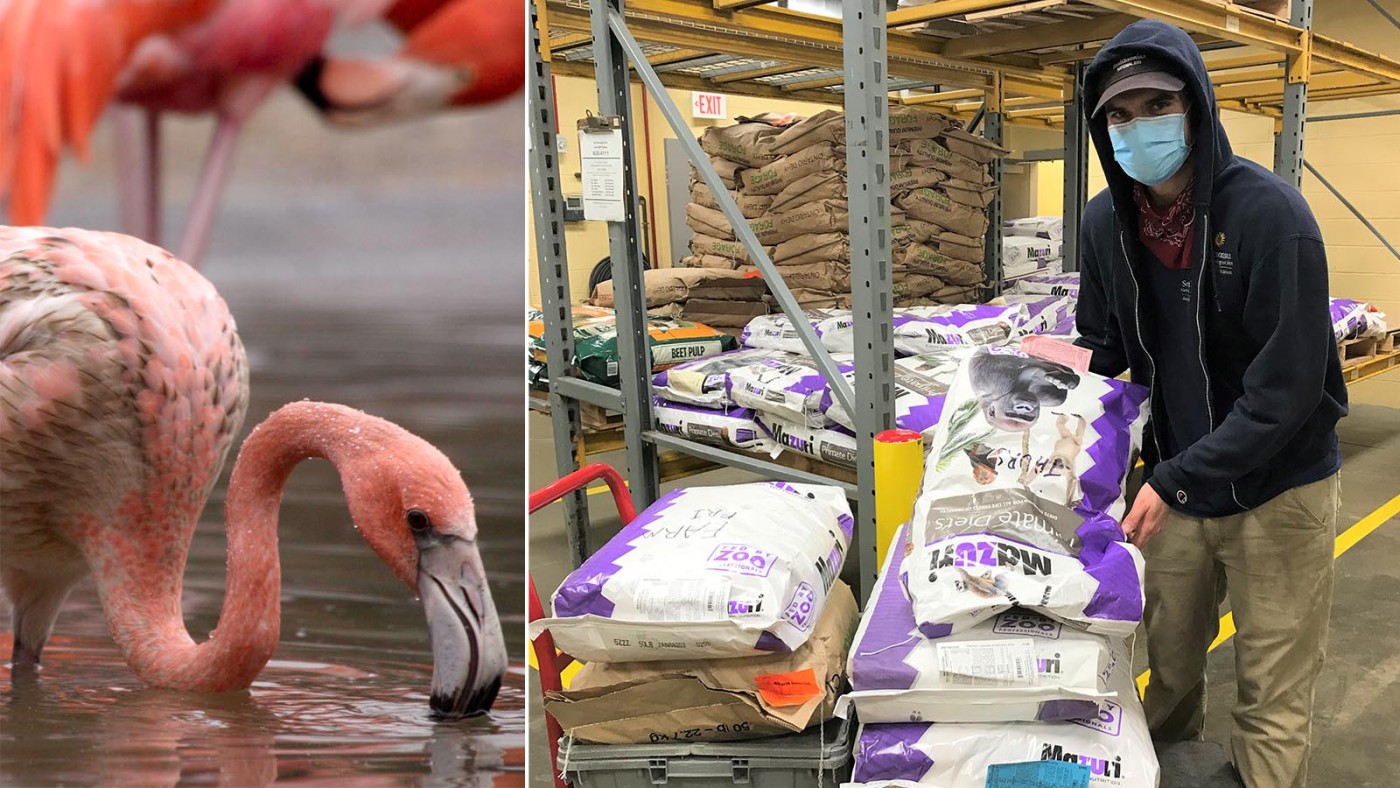
You may have never stepped foot into the Commissary, but if you’ve ever visited the Zoo on a busy day, chances are you have stepped on top of it. Nestled underneath Parking Lot C, the Commissary is where we store and prepare food for all of our residents. In this photo, keeper Nick Schiraldi loads a cart full of pelleted feed to be delivered to the animals. Dry foods such as pellets and biscuits are fortified with nutrients to ensure animals are getting their daily dose of vitamins and minerals.
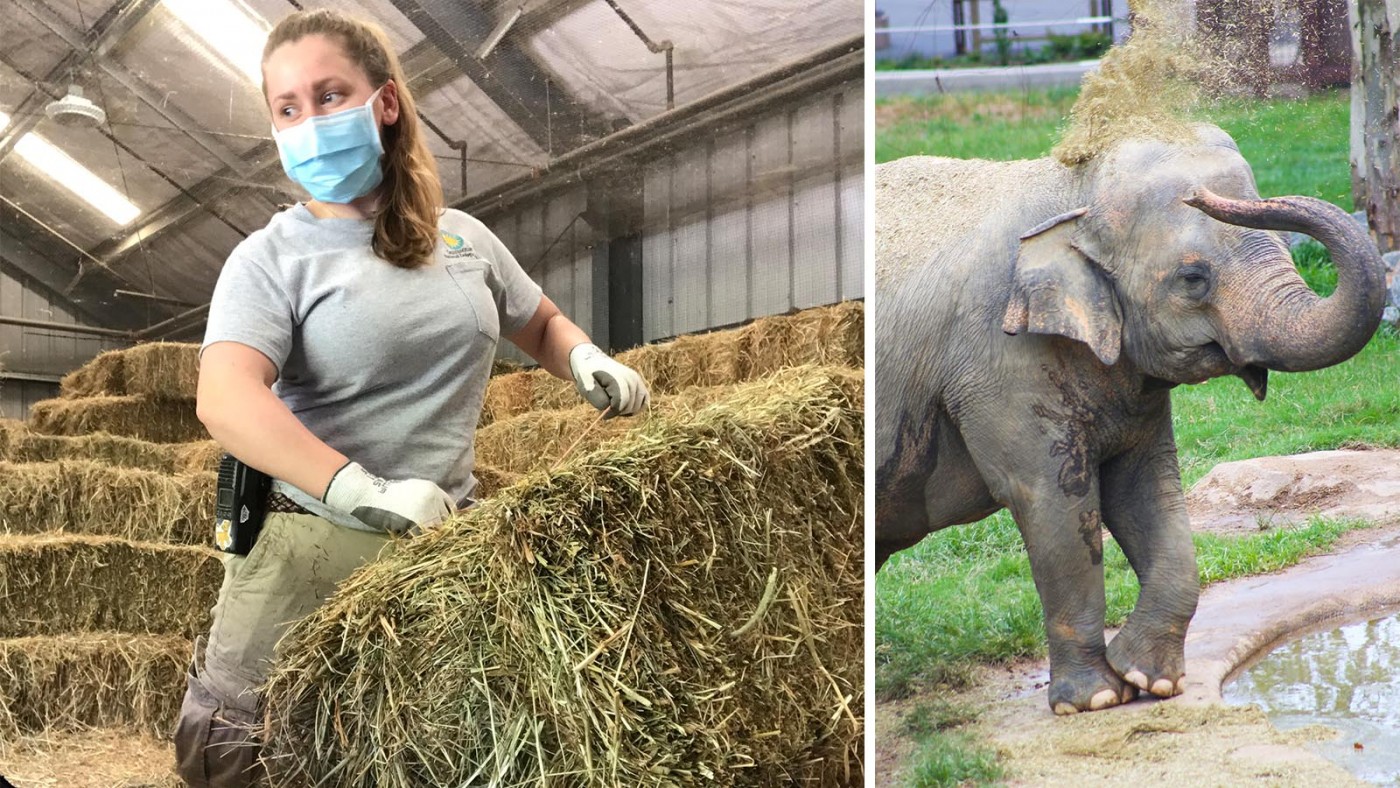
The Smithsonian’s National Zoo and Conservation Biology Institute is the only zoo in the country to grow all of its own hay. At the Smithsonian Conservation Biology Institute (SCBI) in Front Royal, Virginia, we grow orchard grass, alfalfa and a native warm-season grass mix. While our Asian elephant herd consumes the majority of our hay, hoofstock species like the cows and goats at Kids’ Farm, Grevy’s zebra and kudu at Cheetah Conservation Station, and American bison eat their fair share of hay, too. In this photo, I am loading up the truck with orchard grass hay.
Did you know that the nutrient content of hay changes depending on when in the season we harvest the field? It’s true! “Older” grasses—those cut later in the season—are generally higher in fiber and lower in sugars. For this reason, we time our harvests to include both younger and older grasses!
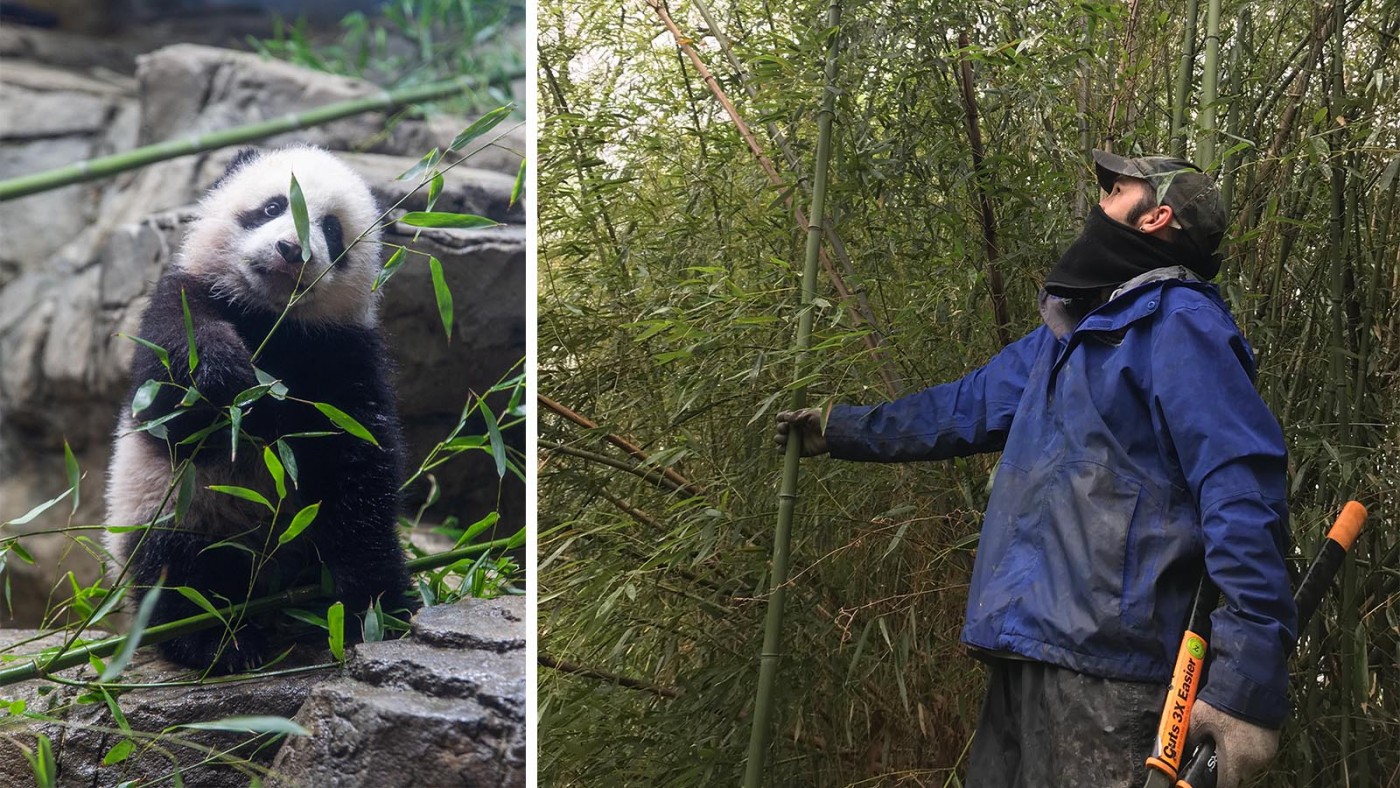
It is well known that our giant panda family—Tian Tian, Mei Xiang and Xiao Qi Ji—eat bamboo. But how does all of that bamboo get to the Zoo? Our supply comes from 20 stands across Washington, D.C., Maryland and Virginia. Thanks to our stand at SCBI and the partnerships we have developed with local landowners, our beloved bears have a steady source of their favorite food. In this photo, keeper Michael Kirby assesses a bamboo stand to determine which culms to cut.
We cut bamboo all year round, in the heat of the summer and in the freezing chill of winter. Throughout the year, pandas transition from eating mainly leaves to mainly culm (the stalk) and back. In summer, bamboo leaves make up the majority of the pandas’ diet. When bamboo shoots start to sprout in spring, the bears receive them as a supplemental treat—and boy, do they enjoy them!
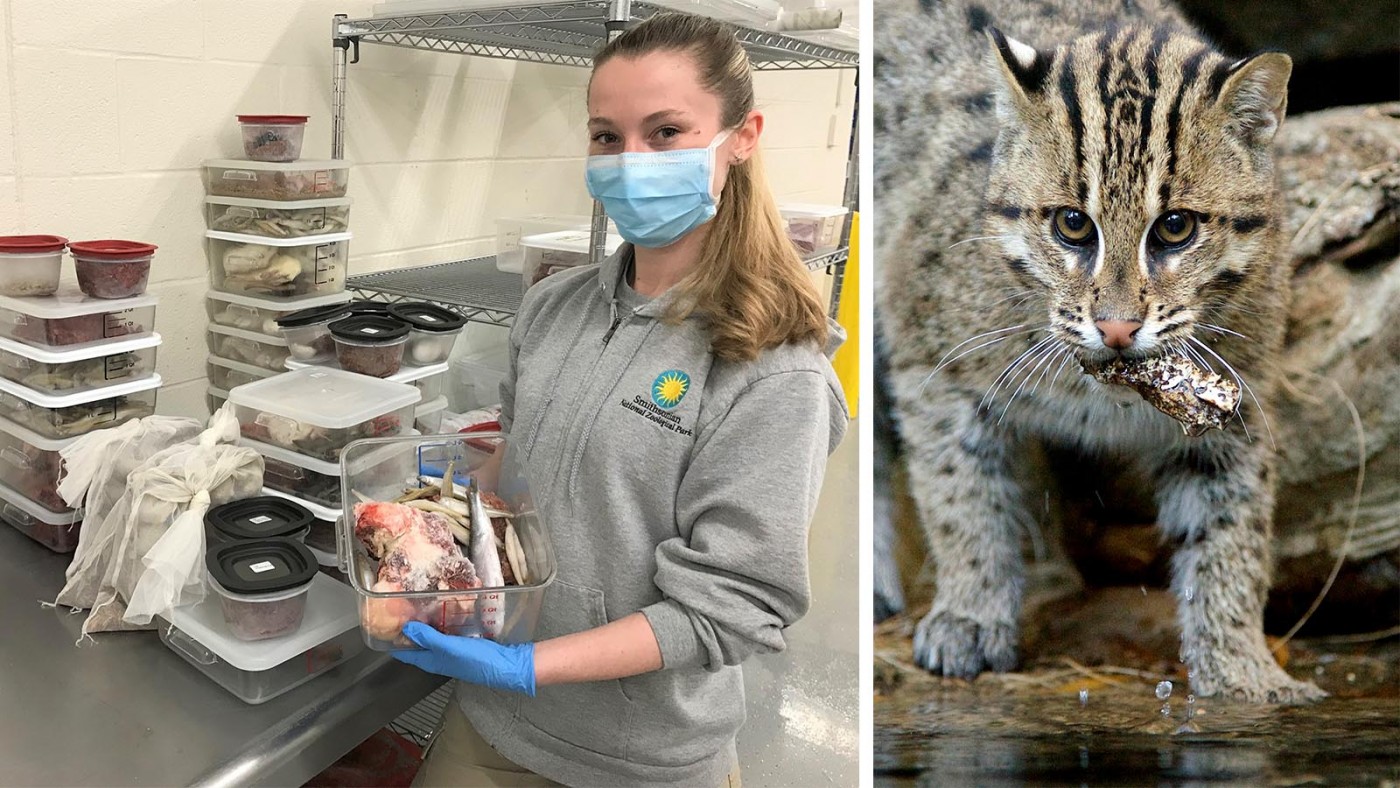
From plants and produce to insects, seafood and meat, the Department of Nutrition Science is responsible for procuring all of the food for the residents of the Zoo and SCBI.
What does food look like when it arrives at the Commissary? Seafood and whole prey items arrive to us frozen. We thaw them overnight in our refrigerated meat room—which is a brisk 38 degrees Fahrenheit—and prepare the diets in this cold environment to keep the food at a safe thawing temperature. The next morning, we deliver them to our hungry residents! In this photo, keeper Kaitlyn Adkins prepares a fishing cat diet. On any given day, these felines may receive a beef knuckle bone, herring, smelt or ground beef carnivore diet to nosh on.
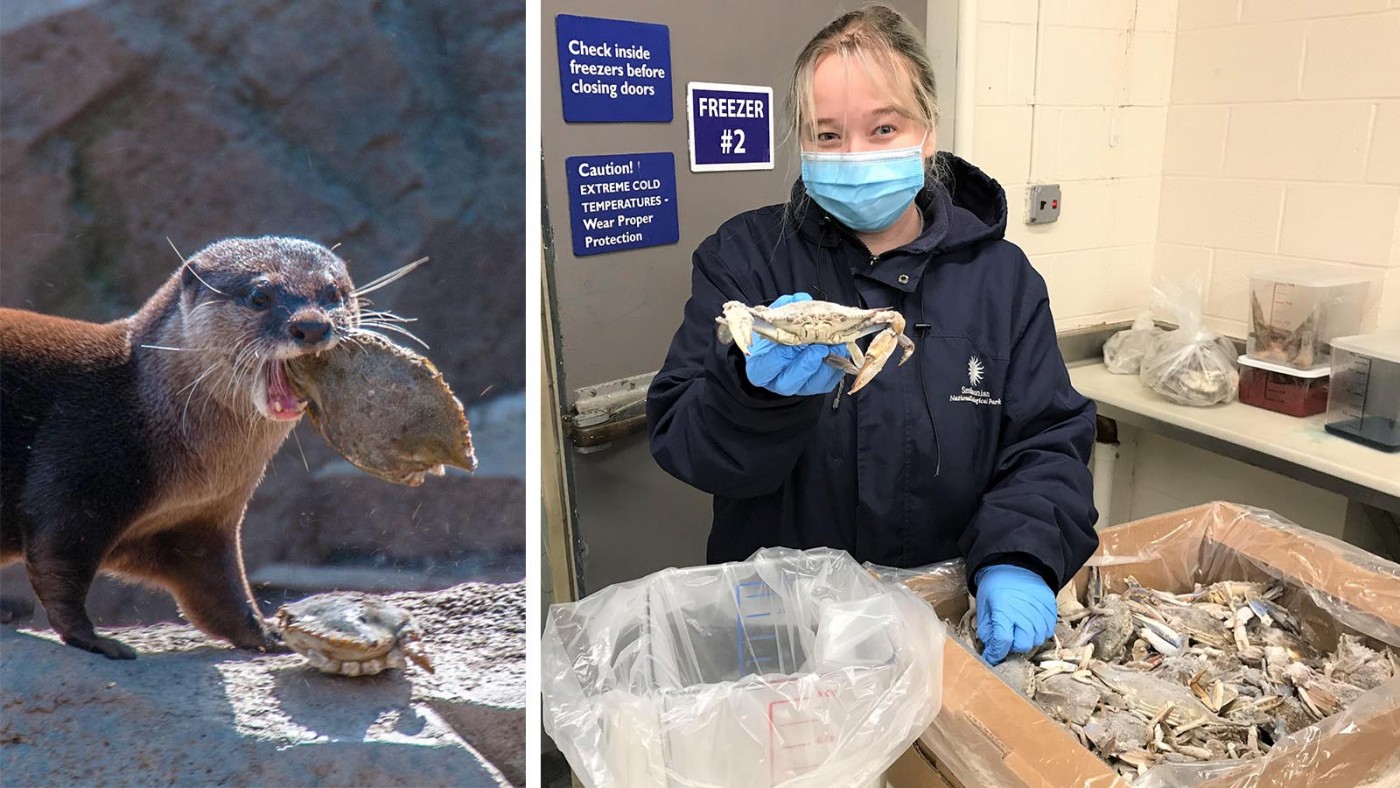
Before we sort the animals’ food, we check each ingredient to ensure its quality and freshness is on par with what we would find in our own grocery store. In this photo, keeper Brittany Hudgins works in our refrigerated meat room and prepares blue crabs for our Asian small-clawed otter family. These and other water-dwelling animals may also receive clams, shrimp, krill, tilapia, butterfish, herring, capelin, mackerel, smelt and squid.
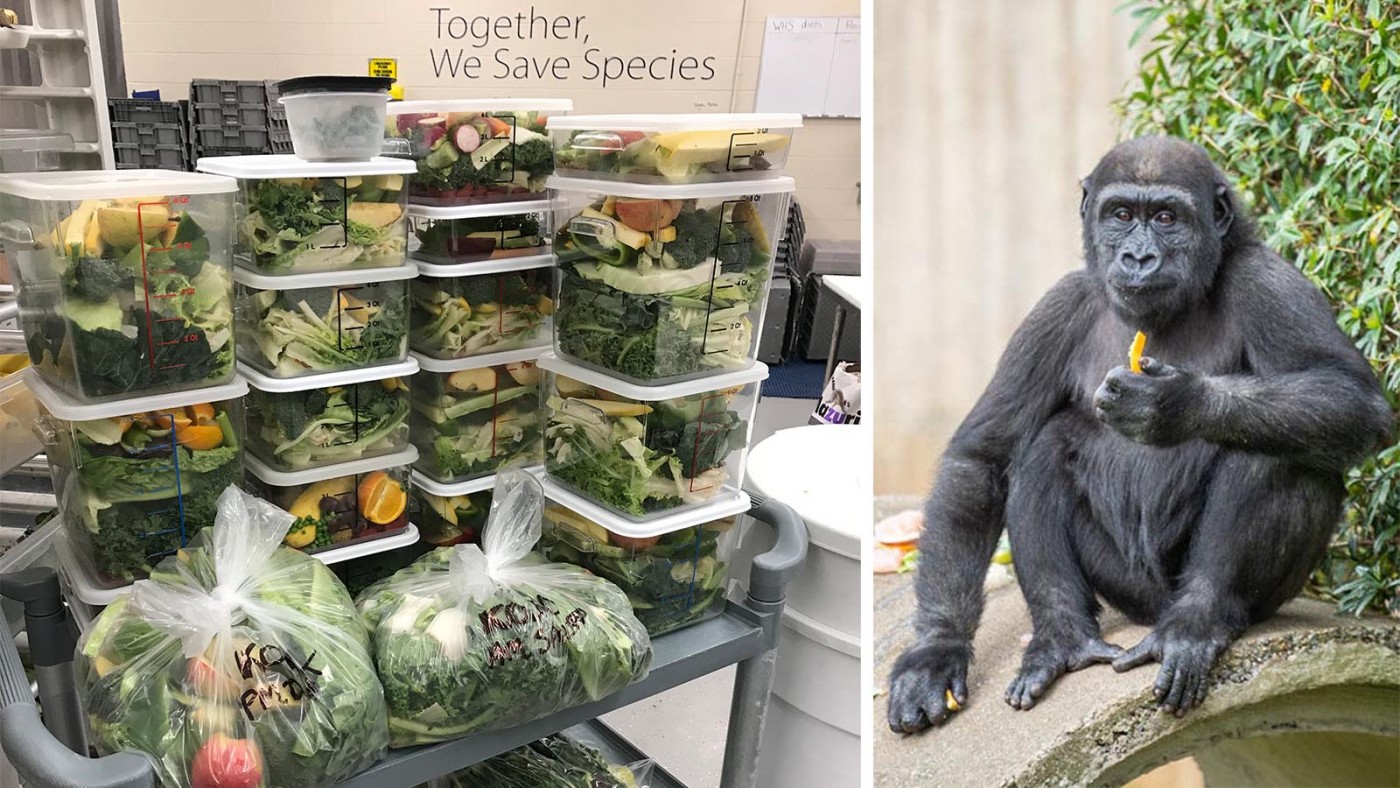
Our great apes have some of the most varied diets of the animals in our care. Adult male western lowland gorillas like Baraka can eat upwards of 45 pounds of food a day; adult females like Calaya and Mandara eat a bit less than this.
Our nutritionists oversee the formulation of diets for all animals at the Zoo and Smithsonian Conservation Biology Institute. Gorillas’ natural diet would include wild celery, stems, bamboo shoots, fruits and tree pulp. At the Zoo, our gorillas receive similar items, including greens, fruits, vegetables and seeds, among other seasonal foods. Browse and alfalfa hay are a nice and filling supplement to the gorillas’ diets. In this photo, the bins hold each individual gorilla’s daily diet, and the bags contain foods that keepers spread around the habitat, enabling the troop to forage together.
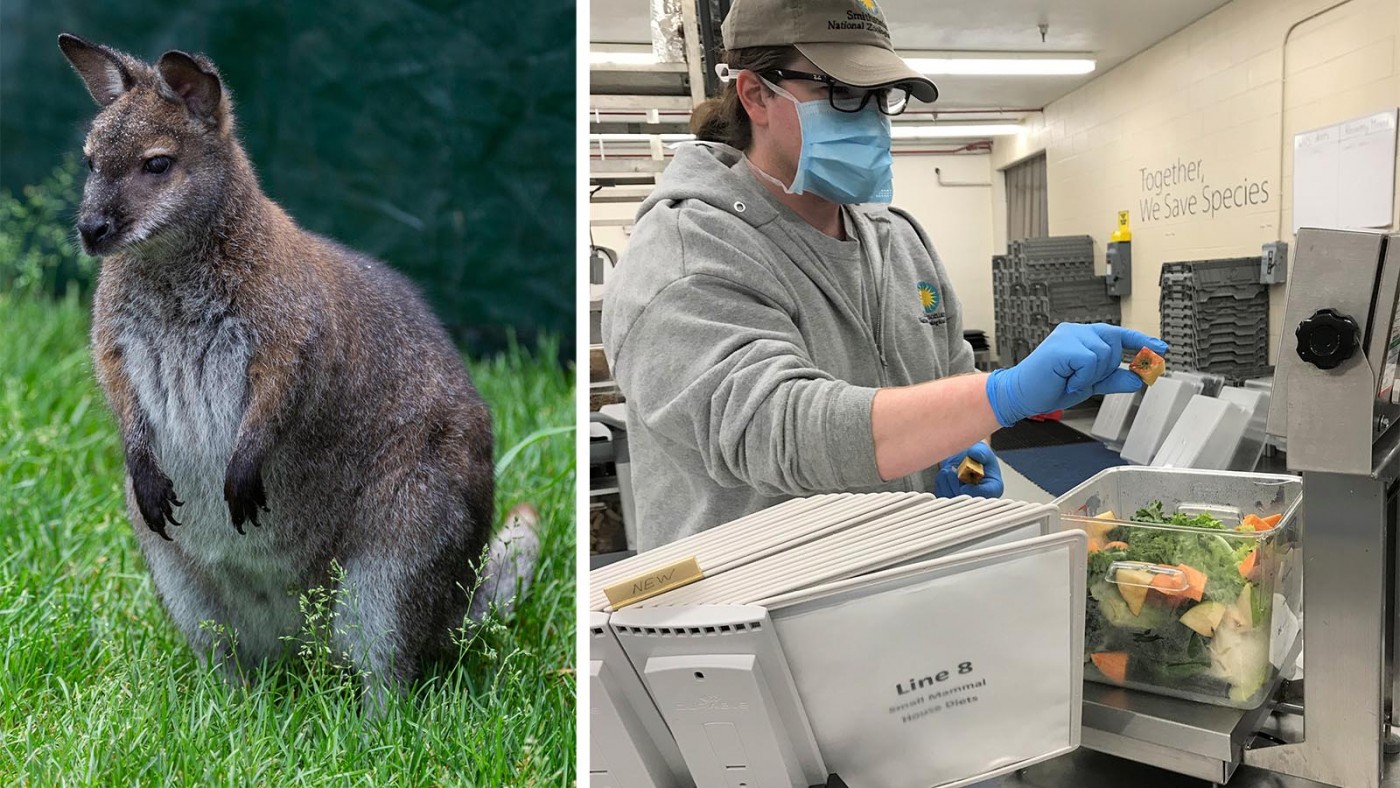
How do we know which foods to feed each animal, and how much they should receive? The answer is simple: each exhibit has its own recipe book! Each “recipe card” (i.e. diet sheet) is tailored to a specific species and/or individual animal and lists both the ingredients and their amounts, measured by weight (grams). We work closely with curators, keepers and veterinarians to ensure all of the Zoo’s animals receive appropriate nutrition and often adjust their diets as animals grow up or gain/lose weight.
In this photo, keeper Brian Cannon is preparing a diet for one of the Small Mammal House’s Bennett’s wallabies. In the wild, Bennett’s wallabies graze on grasses and will occasionally eat roots. Our wallabies receive a diverse diet of hay, browse, grass, greens, apples, sweet potatoes and nutritious biscuits that are specially made for wallabies and kangaroos.
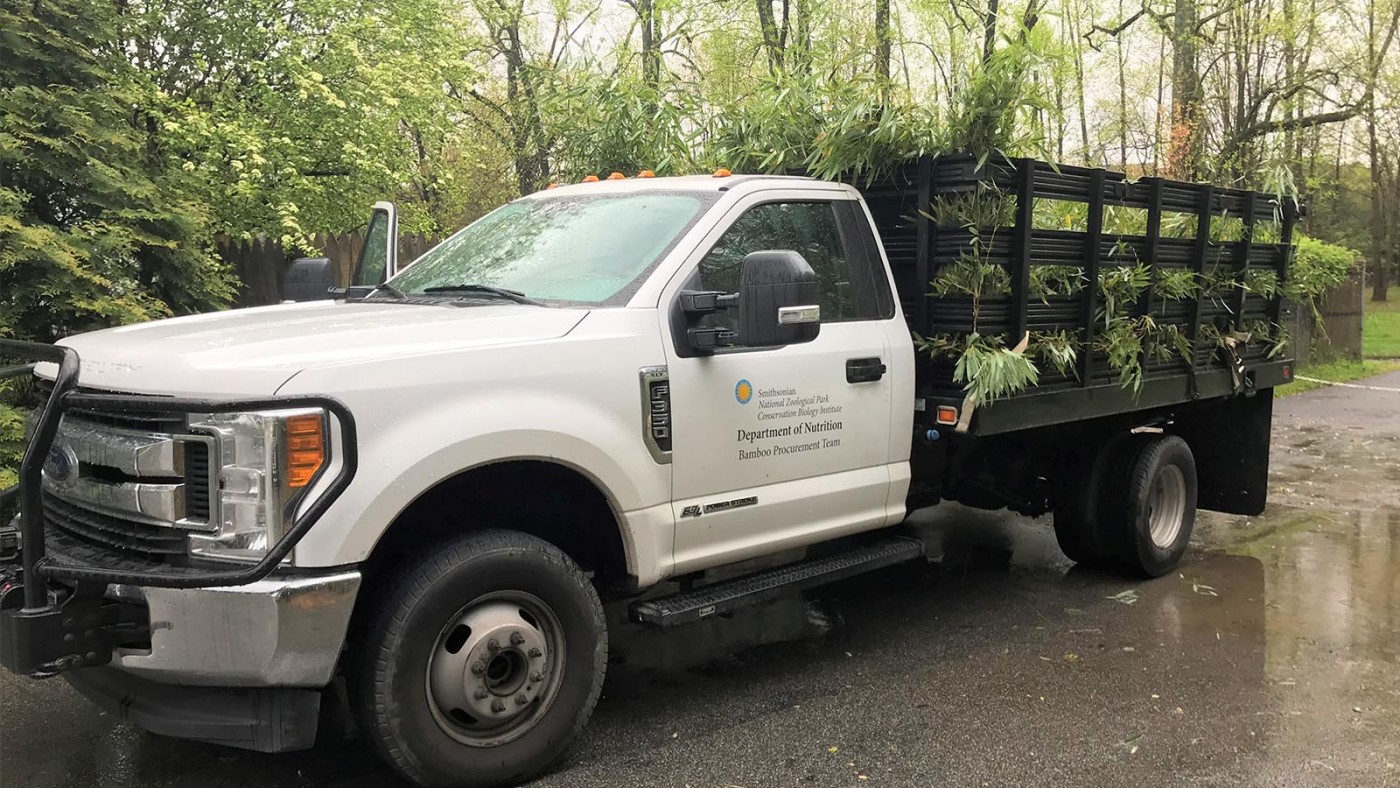
Keep an eye out for the Zoo’s nutrition team out and about in the D.C. region! If you see us in our truck, please give us a wave, and know that we’re headed to or from a bamboo or browse stand. It’s all in a day’s work to provide the best diets for the animals in our care!
Explore the world of Zoo nutrition! What happens when migratory songbirds and shorebirds are hungry to migrate and there’s nowhere to go? Bird House curator Sara Hallager and nutritionist Erin Kendrick share some of the valuable lessons they have learned from taking these birds under their wing. Read all about it here.
